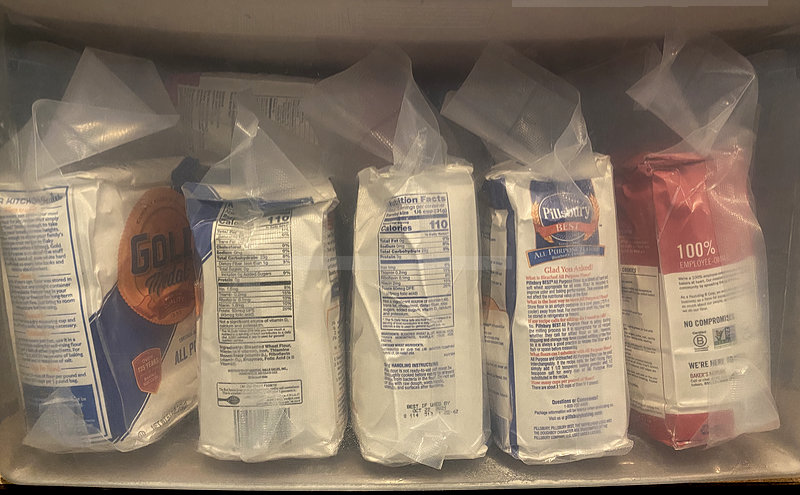Vacuum-Sealed Flour In Its Original Packaging

Terri from California sent me an email with a good question… “Have any of you ever vacuum-sealed flour but left it in its original bag, then sealed? Most people I know put the flour in a paper bag or some other bag. Thanks! Terri”
A follow up message indicated that she started sealing the flour in its original packaging because it just seemed best to her.
She also wondered about it because she’s on a limited income – while knowing that Mylar bags and oxygen absorbers cost more.
She’s thinking about buying more flour at today’s prices, rather than pay more (or lots more) later on, given the inflationary environment.
I told her what we do. Two things…
Vacuum Sealed Flour In Original Packaging
We do have a number of the typical 5-lb bags (or is it 4 pounds now?) of grocery store-bought flour.
We vacuum seal them in their original paper bag packaging using our vacuum sealer machine and gallon size bags.
I figure they’ll still taste alright for maybe around 2 years that way. We have not had a problem. I do know that in time, the taste of milled flour will go “off”. Obviously lots sooner without sealing it up – which keeps the oxygen away.
I keep the multiple 5 pound vacuum-sealed bags of flour inside a plastic storage bin with its lid secured (pictured above). Knock on wood, we don’t have a mouse problem. But otherwise, they may find that flour! Between the vacuum sealed bags and the bin itself, they probably would not smell it anyway…
[ Read: Things You Can Seal With A Vacuum Sealer Machine ]
Buckets of wheat berries for long term storage
I told her the other thing we do is keep a number of 5 gallon buckets of wheat berries. The wheat berries are sealed in Mylar bags with oxygen absorbers (2,000 cc).
This will last many decades without issue. Since the wheat berries are not milled to flour yet, it will last WAY LONGER.
Plus the Mylar and O2 absorbers of course…
[ Read: Oxygen Absorbers For 5-Gallon Buckets ]
Storage Conditions
Regardless of your method of keeping flour, the storage conditions are very important.
As I’ve written about many times, optimum conditions are cool, dark, dry.
[ Read: 4 Things That Affect Food Storage ]
How do you store flour?
So the reason I’m posting this is for your own input and personal experience. This will help Terri and others who may eventually read this. It’s a good topic for a blog post.
With regards to store-bought flour, how do you store it?
Specific types of containers?
Do you vacuum seal any of it?
Have you ever had any issues storing flour for a long time? What were they?
How long until you noticed any “off” flavor?
